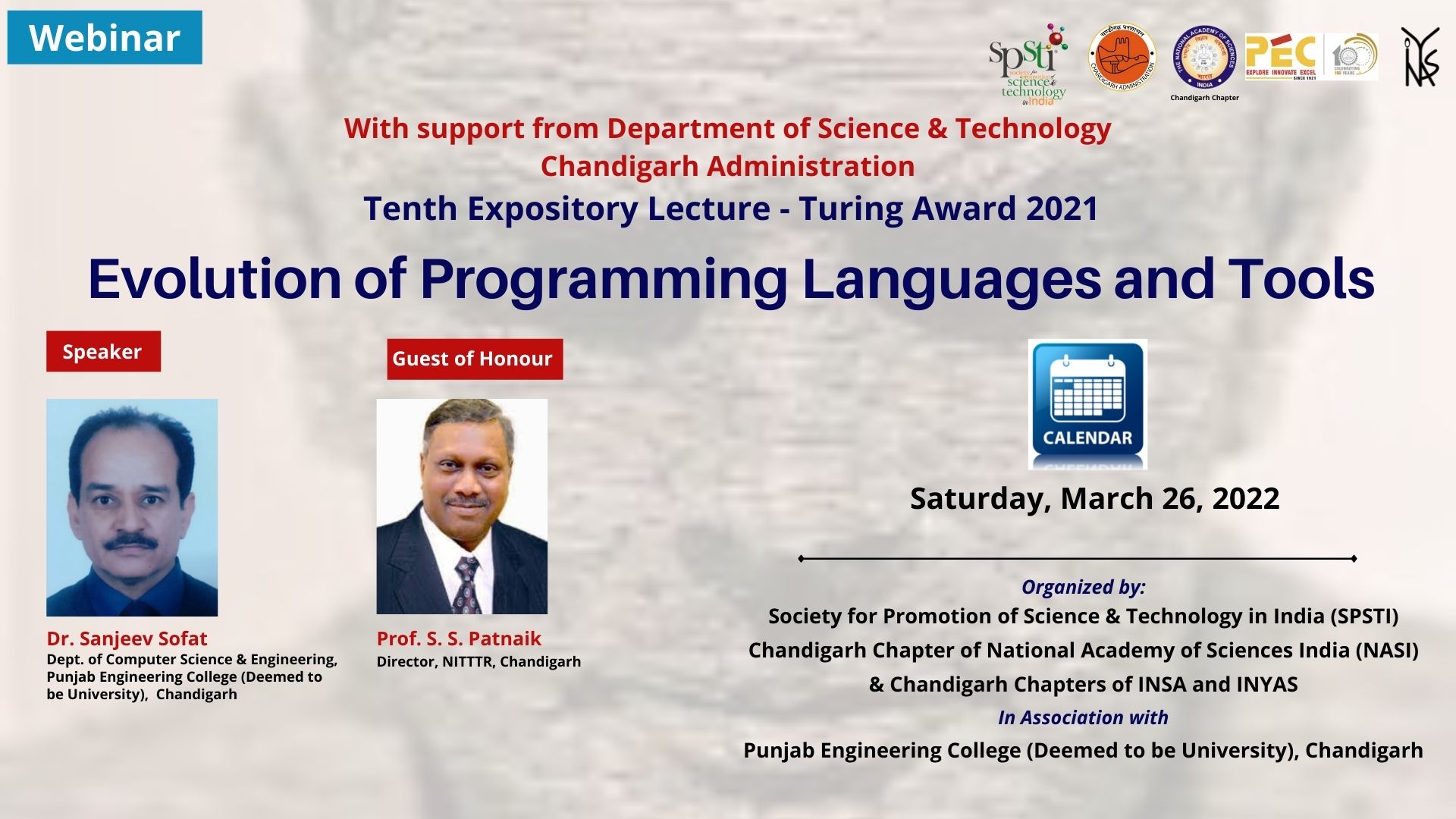The coveted Turing Award, computer science’s equivalent of the Nobel Prize named after Alan Turing, the British mathematician who developed the foundations of modern computing, is given annually by the Association for Computing Machinery (ACM). Alfred Aho and Jeffrey Ullman have won this year’s Turing Award for their work on programming languages. Aho and Ullman established ideas about algorithms, formal languages, compilers, and databases, which were instrumental in the development of today’s programming and software landscape. They are particularly known for their work on the theory of compilers, software that converts instructions from an abstract programming language, into the machine code that the computer executes. This provided the motivation for a session on “Evolution of Programming Languages and Tools”, held on 26th March, 2022, by the Society for Promotion of Science and technology in India (SPSTI) in association with Chandigarh Chapter of the NASI and Chandigarh chapters of INSA & INYAS and Punjab Engineering College (PEC) (Deemed to be University), Chandigarh and with support from the Department of Science & Technology, Chandigarh Administration, organized the tenth expository lecture in the Nobel, Abel, Turing and World Food Prizes. The speaker on this session was Prof. Sanjeev Sofat, Professor of Computer Science, PEC. The guest of honor was Prof. S. S. Patnaik, Director, NITTTR, Chandigarh. The lecture focused on the timeline of programming languages. Some of the early computer languages were Shortcode (the first high-level language which represented mathematical expression) Autocode (1952) and FORTAN (1957), the oldest programming language in use today. ALGOL (1958) was created to serve as the starting point for the development of important programming languages like Pascal, C, C++ and Java. LISP, also developed in 1958, was originally proposed for artificial intelligence. COBOL, developed in 1959 has been used for credit card processors, ATMs, telephone and cell calls, hospital signals and traffic signal systems. In 1964 BASIC was developed, and became the first marketable product of Microsoft company. In 1970 PASCAL was developed which is used in the Apple Lisa and in the early years of the Mac. In 1972 C came up which is used by companies like Google, Facebook, and Apple. The SQL was first developed by IBM is used for viewing and changing information that is stored in databases. ADA was developed in 1980-81 for defence and is used for air-traffic management system. In 1983 C++ came as an extension of C. Haskell developed in 1990 has been used to write a number of games. Python developed in 1991 has become one of the most popular programming languages in data science and is being used by Google, Yahoo and Spotify. In 1995 a family of languages was developed for making webpage which included Java, PHP, and Javascript. Scala developed in 2003 helps with Android development and is used by companies like Linkedin, Twitter, Foursquare, and Netflix. Groovy was also developed in 2003 derived from Java. The language Go was developed in 2009 to address issues that occur due to large software systems. In 2004 Swift was developed by Apple and can be used for desktop, mobile and cloud applications. He shared that many languages are not used today either because of technological development or have been replaced by more sophisticated languages. At present around 250-500 programming languages exists. Existing languages constantly evolve and new languages are created to address the emerging needs. Sometimes there are radical, revolutionary breakthroughs, with a complete paradigm shift, but often there are just gradual improvements and refinements. Also present at the session which was conducted on the Zoom platform were Keya Dharamvir, General Secretary, SPSTI. Dr. Sunil Dutt from NITTTR, Dr. Sanjeev Kumar, from Department of Physics, Punjab Engineering College, Chandigarh, Shri Dharam Vir, President, SPSTI. The session was much appreciated by the audience and followed with lively questions and discussion. The information about future lectures in the series will be available on the SPSTI webpage and lectures can be accessed on the SPSTI Facebook page.

